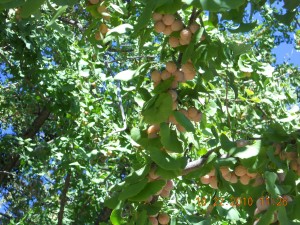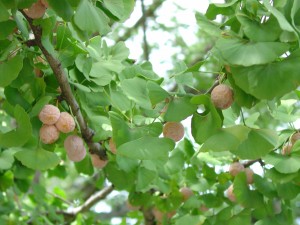
Surviving an autumn season with a heavily fruited ginkgo (Ginkgo biloba) tree is a foul smelling experience. The odorous yellow fleshy fruits ripen in October and drop onto public streets and home lawns. Several times I have witnessed the Jonesborough Tennessee Fire Department raking up fallen fruit and hosing down a sidewalk too treacherous to walk upon from the slick pulp that coated the street. Attempting to remove the stench from your shoes is an almost impossible task.
Ginkgo is a lovely large shade tree which prospers over many human generations in the landscape (USDA hardiness zone 4-8). The dioecous (single sexed) ginkgo tree is either male or female. In many U.S cities, a female ginkgo is forbidden by law to be planted. Most nurseries sell male-grafted trees, properly labeled by cultivar. Some recommended selections are: Princeton Sentry®, ‘Magyar’, ‘Fairmount’, ‘Haika’, ‘Autumn Gold’ and Spring Grove®.
Gardeners may harvest the fruit, remove the pulp and sow the seed in the fall. The following spring many seeds germinate and develop into lovely ginkgo trees if properly pruned, irrigated and fertilized. A lingering question is whether the tree seedlings are male or female. Ginkgo grows into flowering adulthood in 20-25 years. Worth the wait or do some trees become a chain saw disappointments?


 Posted in
Posted in 
